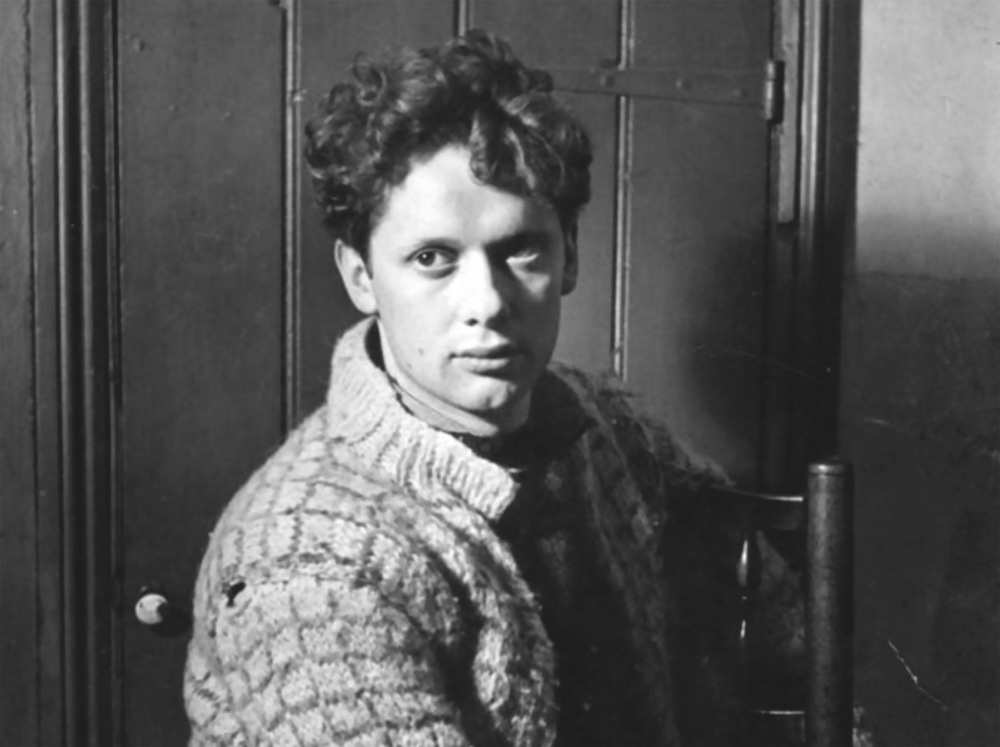The Contemporary Poetry and Music Circle was hugely influential in the post-war years. Its legacy is finally being unearthed

You too, I know, have waited for doors to fly open, played
with your cold chemicals, written long letters
to the Press; listened to the truth afraid, and dug deep
into the wriggling earth for a rainbow with an honest spade.
Dannie Abse, “Letter to Alex Comfort” (1977)
From 1943, in the midst of the Second World War, a group of poets and musicians began to gather each month at the Ethical Church in Bayswater, drawing an eager audience to the dimly lit basement beneath the busy streets of central London. The church was dedicated to no gods – but goodness, truth and beauty. The Contemporary Poetry and Music Circle drew a long list of celebrated writers, among them Stevie Smith, best known today for her macabre humour and the poem “Not Waving But Drowning”; the poet and translator James Kirkup, whose “The Love That Dares to Speak Its Name” led to the infamous blasphemy prosecution of Gay News in 1976; and the Tamil poet and editor Meary James Tambimuttu, who founded the literary magazine Poetry London.
The meetings would later be recalled by the teacher and writer Alan Brownjohn as “the contemporary Mecca of most younger (and a few older) London poets and poetry-readers, [and] virtually the only venue for public readings” at the time, before the concept of poets reading their work had really taken off. They undoubtedly contributed to the subsequent public readings boom of the 1960s. But despite the powerful recollections of the participants and audience members, these gatherings are little recorded in the histories of British poetry or of humanism. How did they come about, and what was their legacy?
The Contemporary Poetry and Music Circle began its life as one of the many sub-groups of the Progressive League, an organisation founded by prominent humanists including the science fiction writer H. G. Wells and the philosopher and broadcaster C. E. M. Joad, with the stated aim of bringing together “open conspirators to change the world”. The league was known for its advancement of scientific humanism, and progressive attitudes in matters of sex and society, but it also placed special emphasis on the arts.
In a 1943 edition of the League’s journal, PLAN, they announced the success of an experiment to translate their music and poetry hour – “one of the distinctive features of the Progressive League’s country conferences” – to the “less idyllic atmosphere of the metropolis”. Any feelings of apprehension that the “original bloom of the gatherings might be lost” were soon forgotten in the surrounds of the Ethical Church’s “charming hall”.
The meetings were free to attend but invited donations, with the poetry coordinated by Alec Craig, a poet, writer and activist against obscenity laws. Its musical performances, ranging from folk songs to piano solos, were organised by Alfred Ashton Burall, a civil servant who would later become chair of the Ethical Union, now Humanists UK. A refreshment interval was viewed as an important part of the evening, enabling poets and musicians to speak to those in the audience about their work.
But for its owners, the church was becoming burdensome, with complaints of dry rot in the basement and dodgy electrical wiring. After some tense negotiations, it was eventually sold in 1954 to the Catholic Church – a move that was part of a conscious step away from the aping of religious ceremony, which was increasingly out of step with the wider humanist movement.
In a new – albeit still a little dog-eared – building in Kensington, the Contemporary Poetry and Music Circle continued to cement a reputation as a vital space for poetry performance in the capital. Even then, in the mid-1950s, wrote Brownjohn, “the huge 1960s wave of poetry readings – by everyone, everywhere – was not discernible on the horizon, so younger poets met each other at a relatively small number of venues where the famous or notorious performed their work.”
Both the famous and notorious had certainly found a home in the Ethical Church basement. It was the place where many in London first heard the lauded Welsh poet Dylan Thomas, perhaps best remembered for his rallying “Do Not Go Gentle into That Good Night”. In contrast to an atmosphere generally described as respectful and sedate, one infamous episode occurred in the winter of 1949: a mid-performance attack on the sensitive and socialist poet Stephen Spender by the right-wing writer and Catholic-convert Roy Campbell, described by writer Peter Vansittart as a “hooting dazzle of fisticuffs”.
It was in part retaliation, apparently, for Spender’s criticisms of Campbell in a poetry review a decade earlier, which had included accusations of proto-fascism and anti-semitism, combined with Campbell’s sense of rejection by the London literary elite. There are many accounts of the incident, each of which agrees that while Campbell launched himself at Spender, the performing poet maintained complete calm, returning to the stage after stemming a bleeding nose and begging forgiveness for Campbell – “a great poet … a great fighter for the things in which he believes”.
Given the Circle’s significance as an incubator of talent, Brownjohn wrote, “someone should, long since, have written a definitive memoir about the readings … where so many young poets of the time dug for rainbows.” His reference was to a poem by the Welsh poet and physician Dannie Abse, who came to the gatherings. Abse’s “Letter to Alex Comfort” is a missive to his fellow humanist, activist and doctor, who also read at the Circle, who plays with “cold chemicals”, pens “long letters to the Press” and digs “deep into the wriggling earth for a rainbow with an honest spade”.
Like James Kirkup, whose prolific literary output and humanitarian activism have been overshadowed by the infamy of the Gay News trial, Comfort’s pacifism and his wide-ranging poetic and philosophical contributions have been largely lost in his enduring legacy as author of the bestselling The Joy of Sex. In Abse’s poem, though, the multiplicities of Comfort’s life are brought together. Abse, who memorably described himself as a poet first, with medicine his “serious hobby”, expresses his kinship with Comfort, who experiments, takes action and seeks magic in the facts of reality.
This marrying of rationalism’s “cold chemicals” and the “rainbows” of creativity was typical of the Circle and of the wider Progressive League. For the Circle’s poetry organiser Alec Craig, words were “avenues of approach to the mystery of reality”, a means of maintaining reverence for this mystery, while interrogating it. For another attendee, writer and Poet Laureate Cecil Day-Lewis, the poet “like the scientist … is exploring reality. He wishes to make sense of it.” For many in the Circle, this was also a route to remaking reality, not least in the years following the end of the Second World War, when many felt disillusioned, yet tentatively hopeful about how society might be rebuilt for the better. Comfort was explicit about this, writing in 1946 of the artist as an “advocate and defender” of humankind against unthinking obedience to authority, or to tin gods.
Though the Circle came to be independent of the Progressive League, many of those who performed and listened had its causes in common – tending to be left-wing in politics and agnostic in religion. Like the Ethical Union with which it was closely connected, the League worked during the 1950s to liberalise divorce laws, decriminalise homosexuality and reform the obscenity laws that could be used to prohibit publications deemed likely to “deprave” or “corrupt”. Craig, writing in this magazine in 1957, argued fiercely against this form of censorship, believing it to be a menace to “ethical speculation, educational progress, and the freedom of artistic expression”.
As Alfred Ashton Burall wrote in 1945, although the arts could provide “an enrichment of life which is its own justification”, they also explored and enacted the values of their facilitators. This attitude was reflected in the Circle’s internationalist outlook, and its emphasis on fostering young talent and modern poetry. Kirkup recalled “a preponderance of Viennese and German refugee singers” in its early years, as well as the presence of Gloria Komai, the first poet he knew to introduce Japanese sensibility into her work. Music might come from the Hebrides or Latin America, and poetry was regularly read in translation, whether from Chinese or Hebrew. The Circle continued into the late 60s, by which time the huge wave of poetry readings it preceded had arrived.
Alan Brownjohn died in February this year. None of those mentioned above are still with us. But the excavation of the Contemporary Poetry and Music Circle offers us a glimpse into gatherings, held over almost a quarter of a century, that had a marked influence on the history of British poetry, and on the lives and careers of many of those who stepped through its doors. It also speaks to the oft-overlooked relationship between humanism and the arts: ways of seeing which shaped creation, and creativity which shaped how others might see the world – with empathy, imagination and idealism. As Cecil Day-Lewis wrote in This I Believe (1953): “the compulsion of poetry is the sign of a belief … a belief that men must enjoy life, explore life, enhance life. Each as best he can.”
This article is from New Humanist’s winter 2024 issue. Subscribe now.

